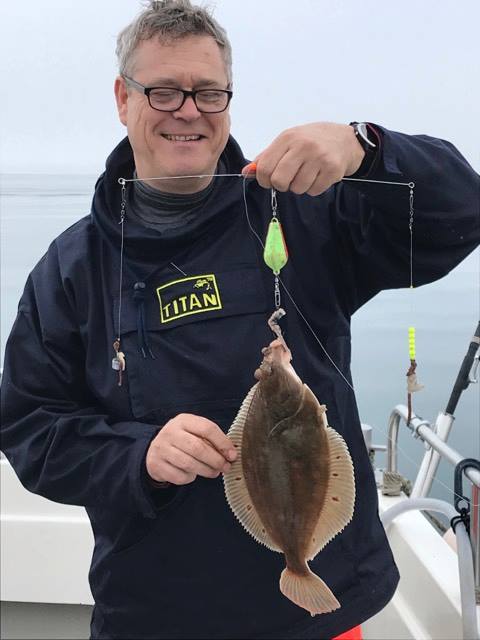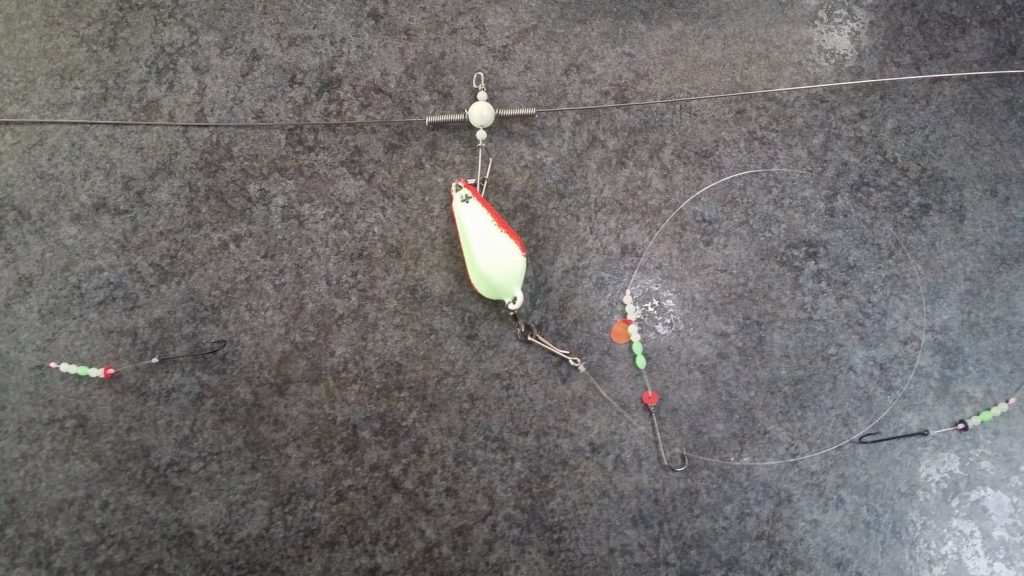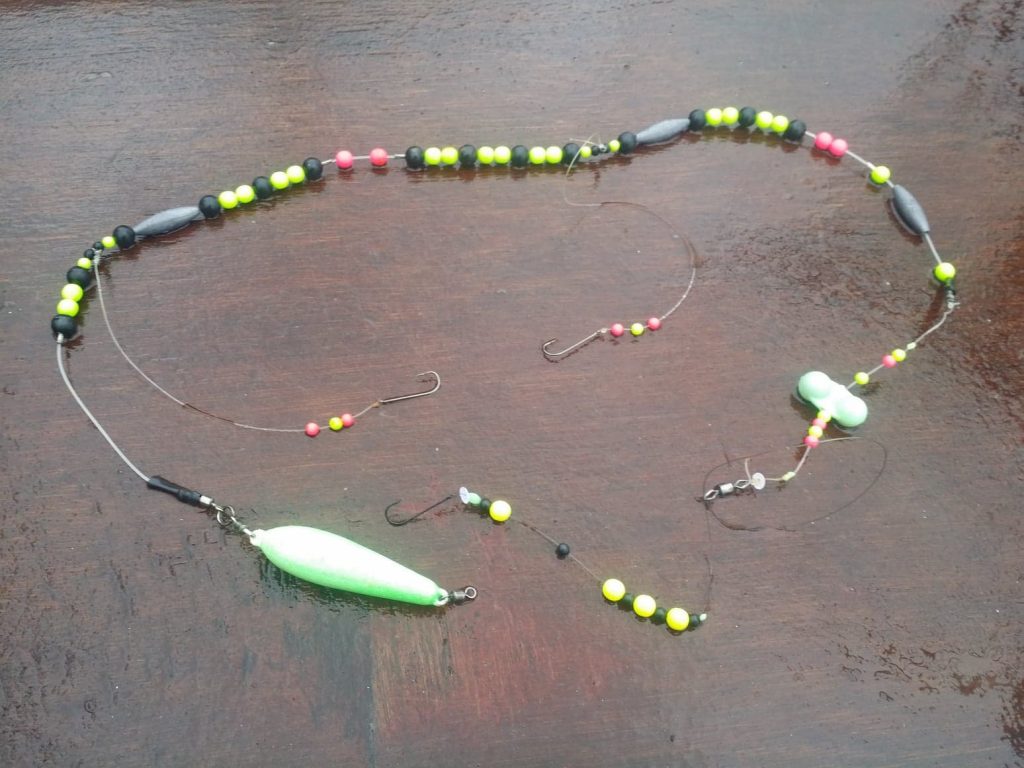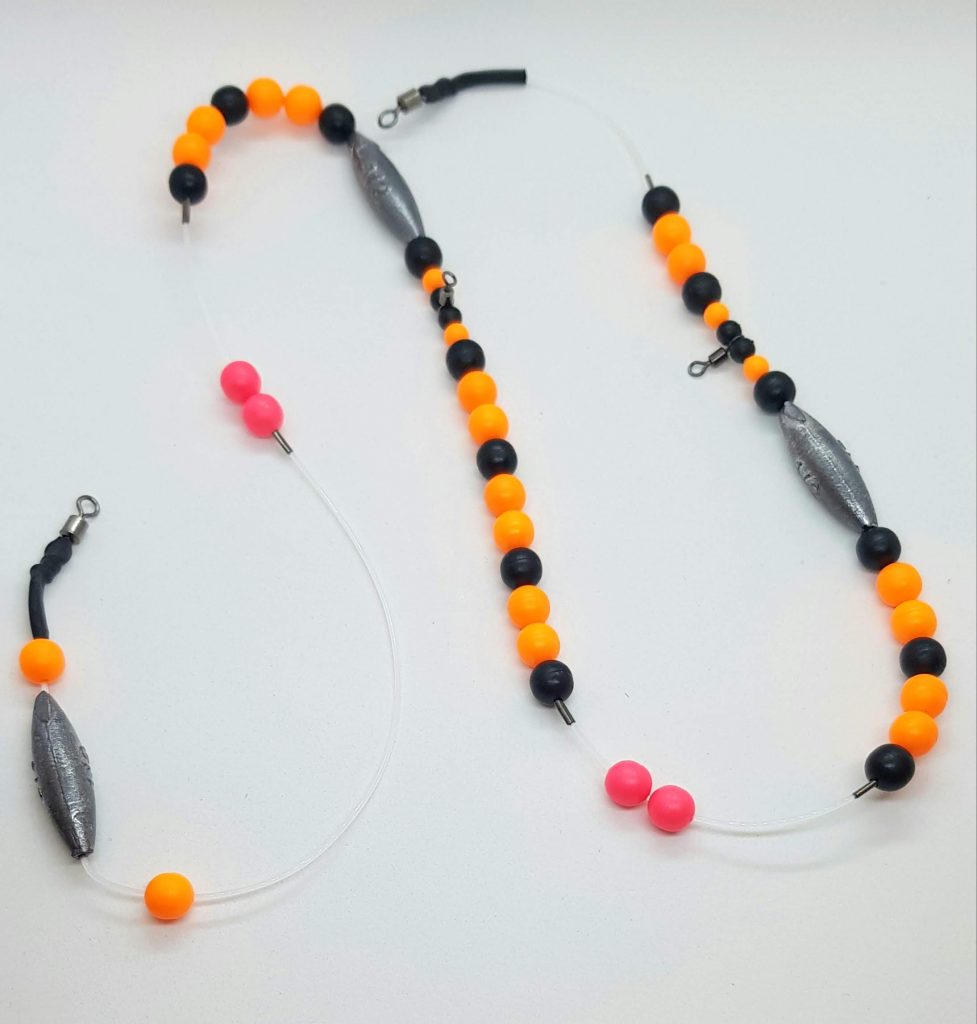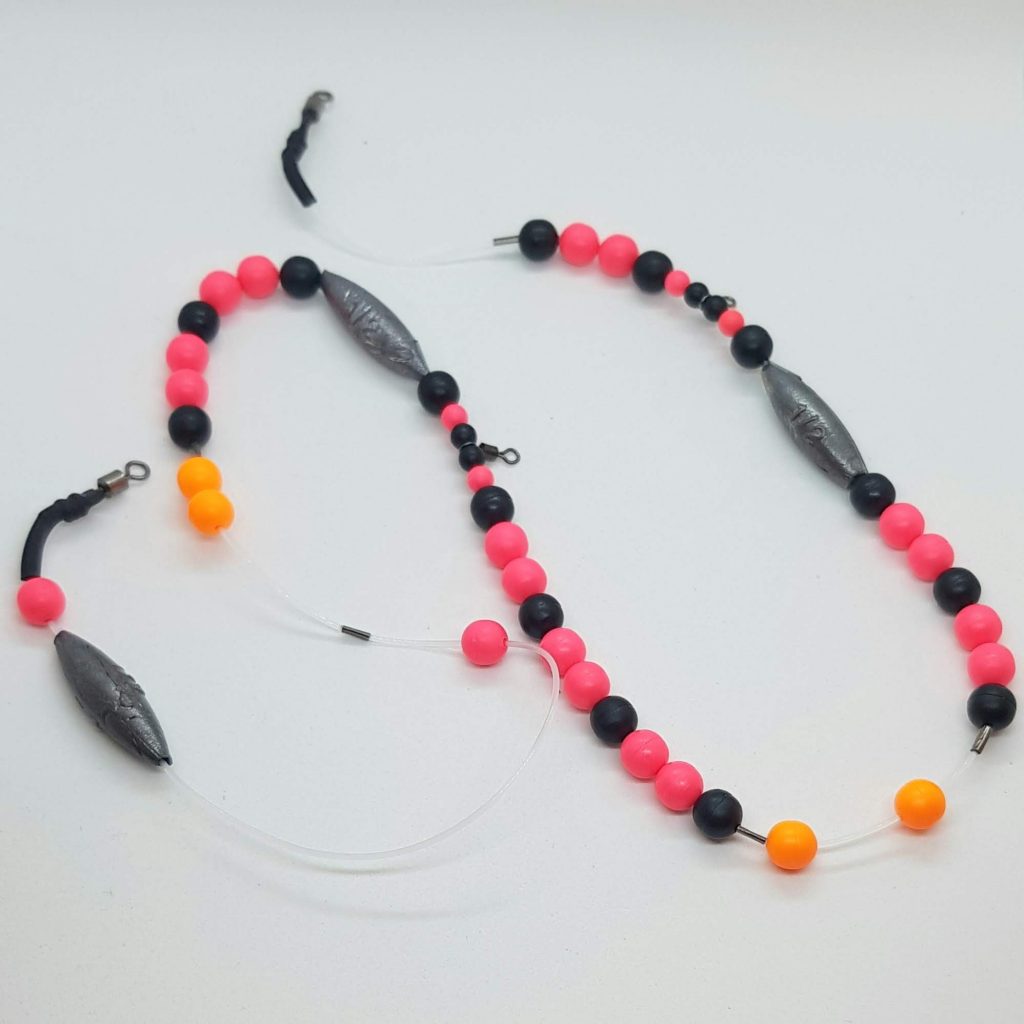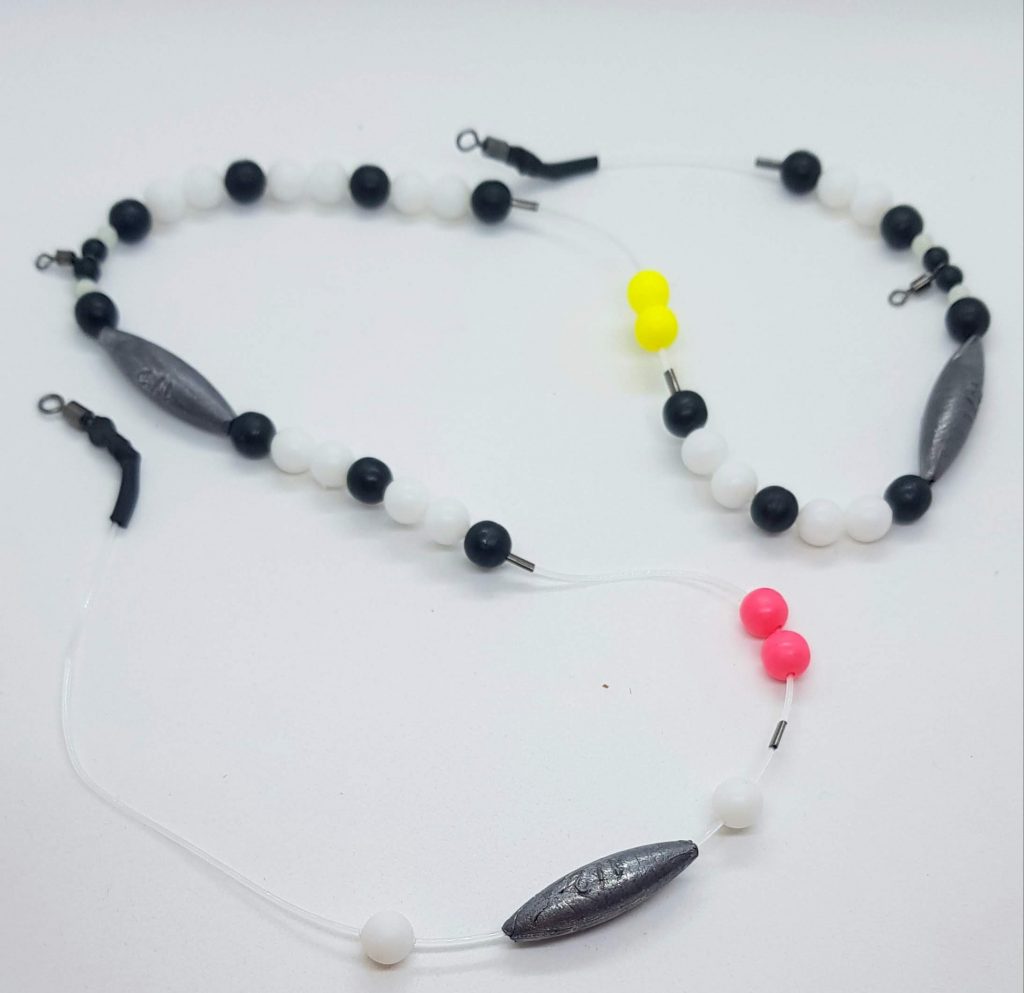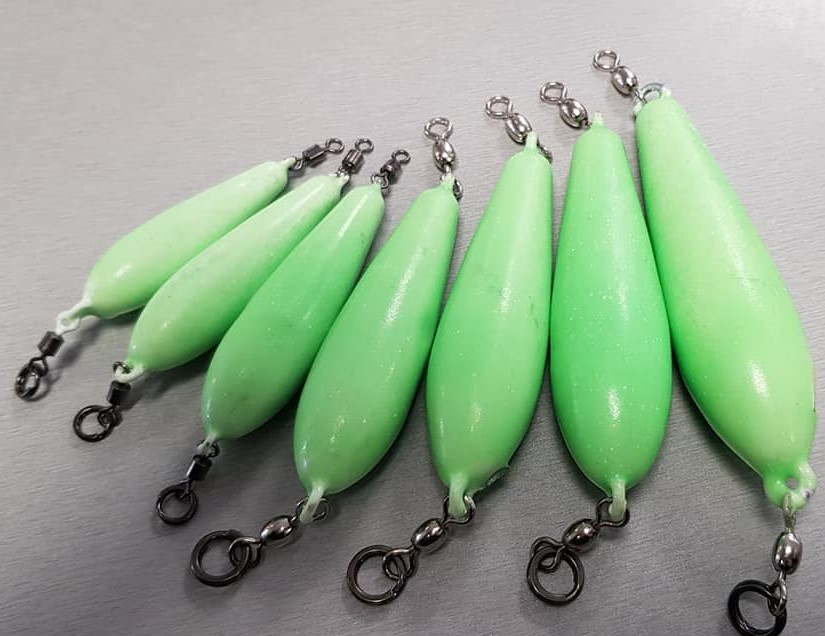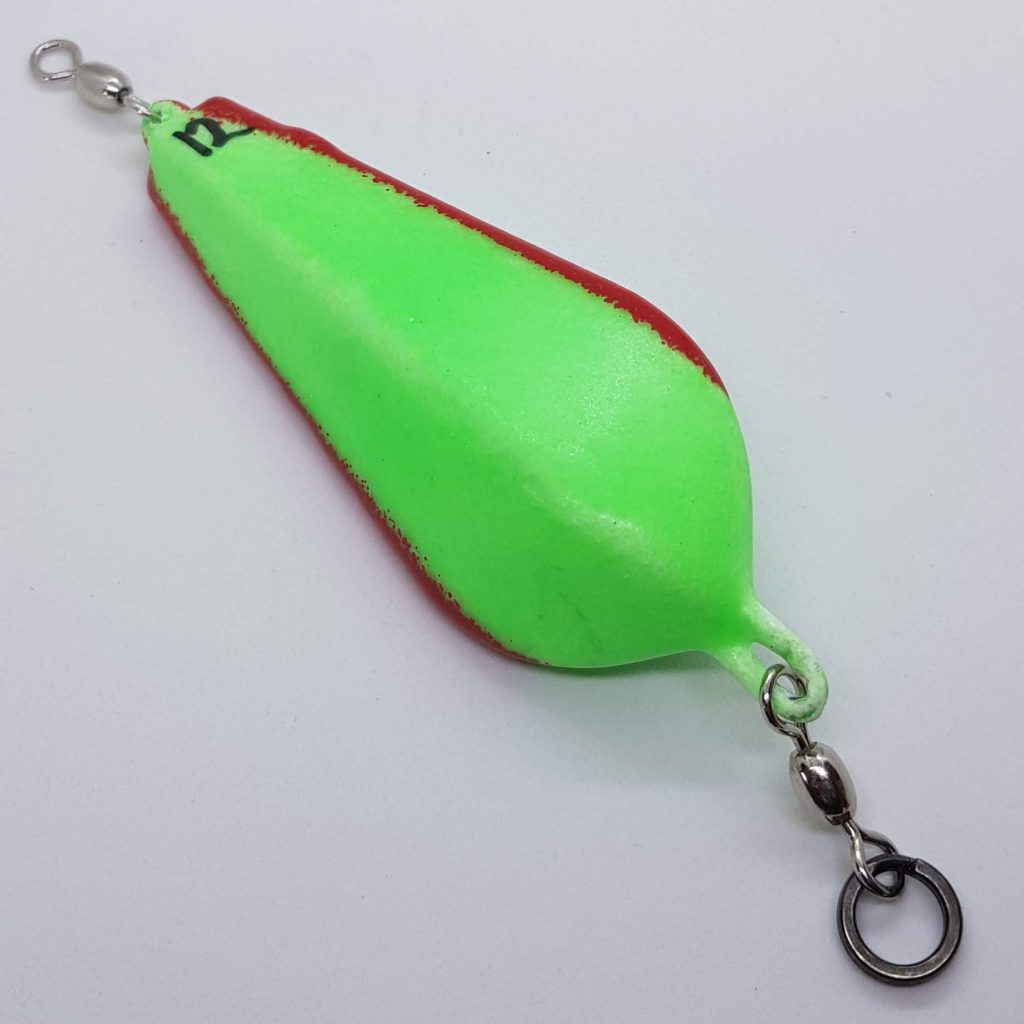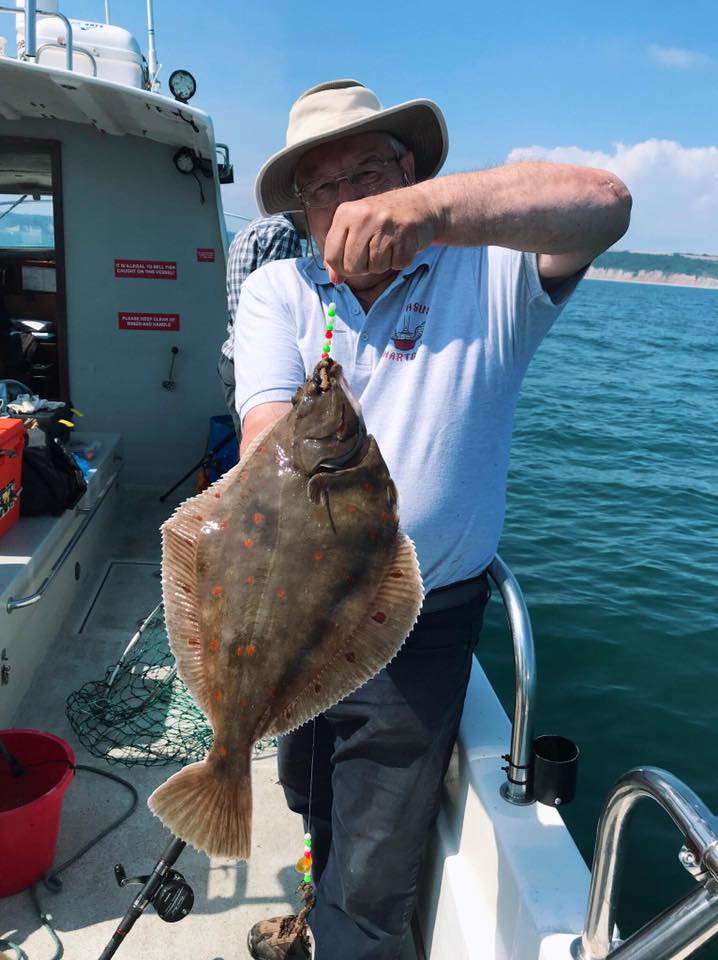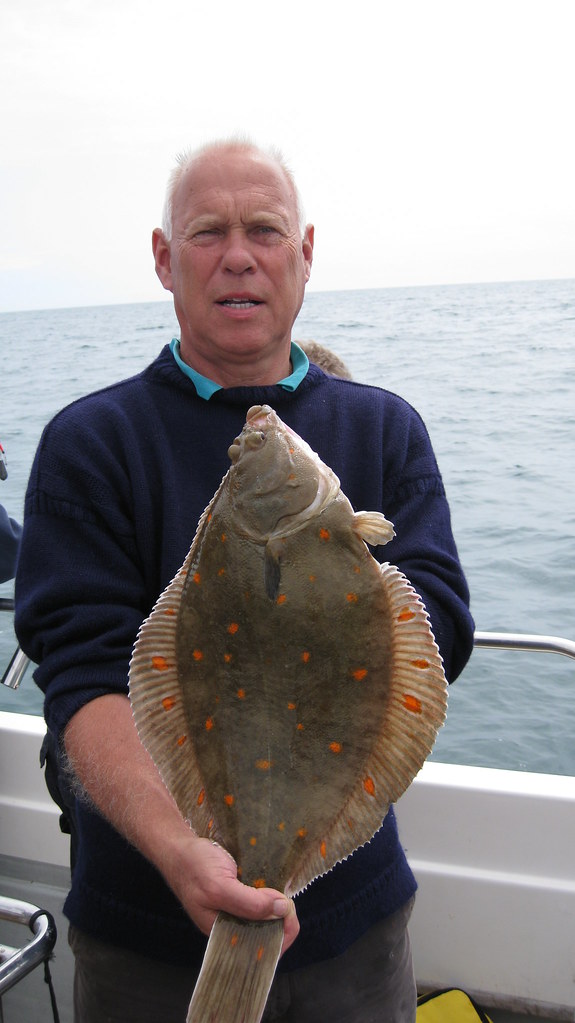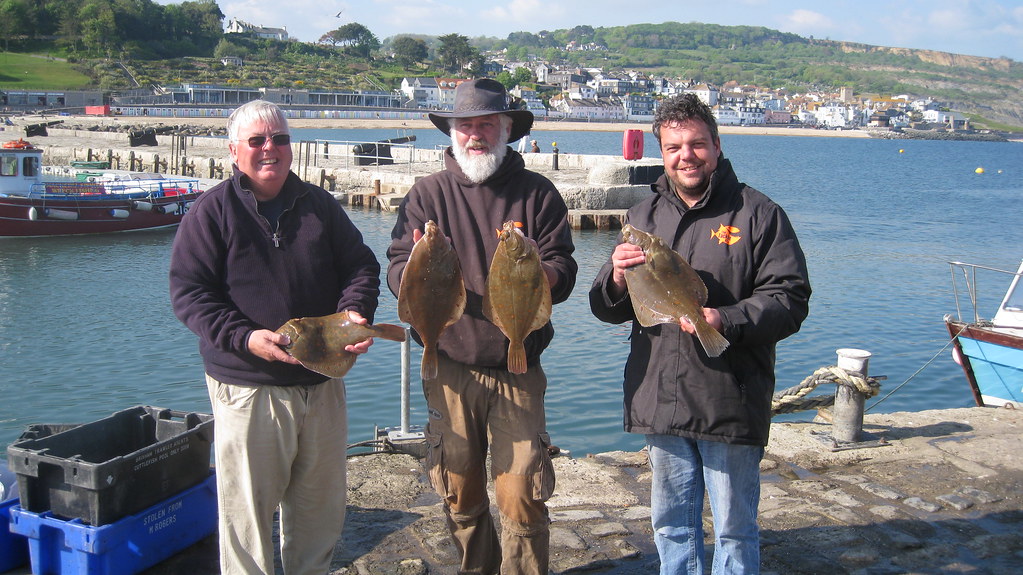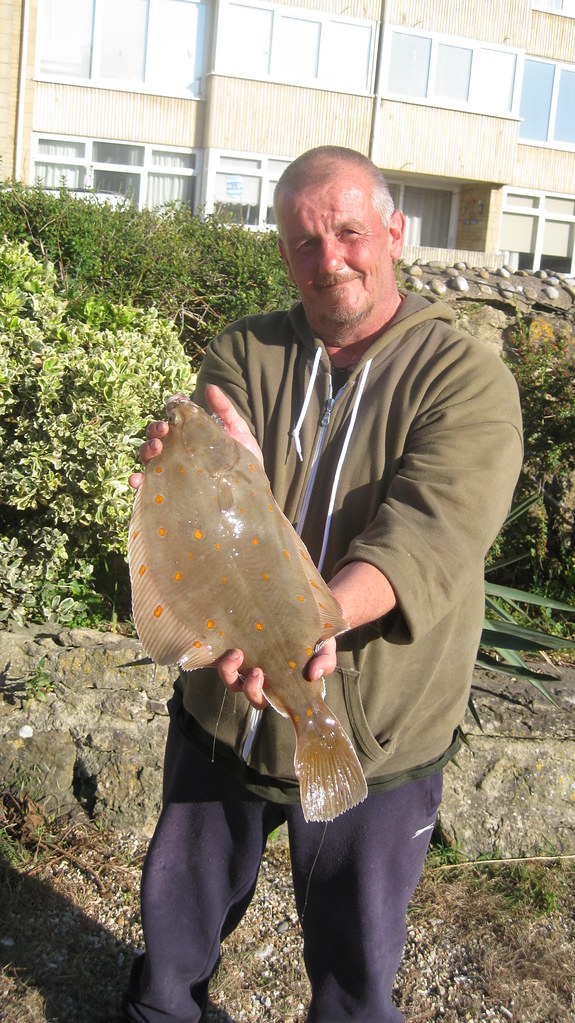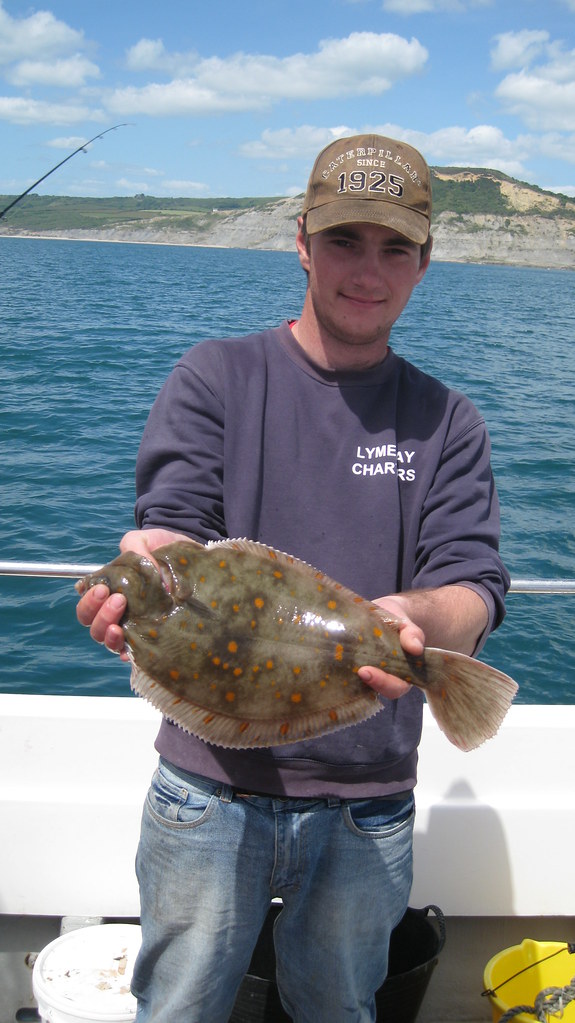The number of Plaice now present on the South Coast has increased dramatically over the last 10 years and they make a great eating fish to target, from May right through until October, and it couldn’t be simpler!
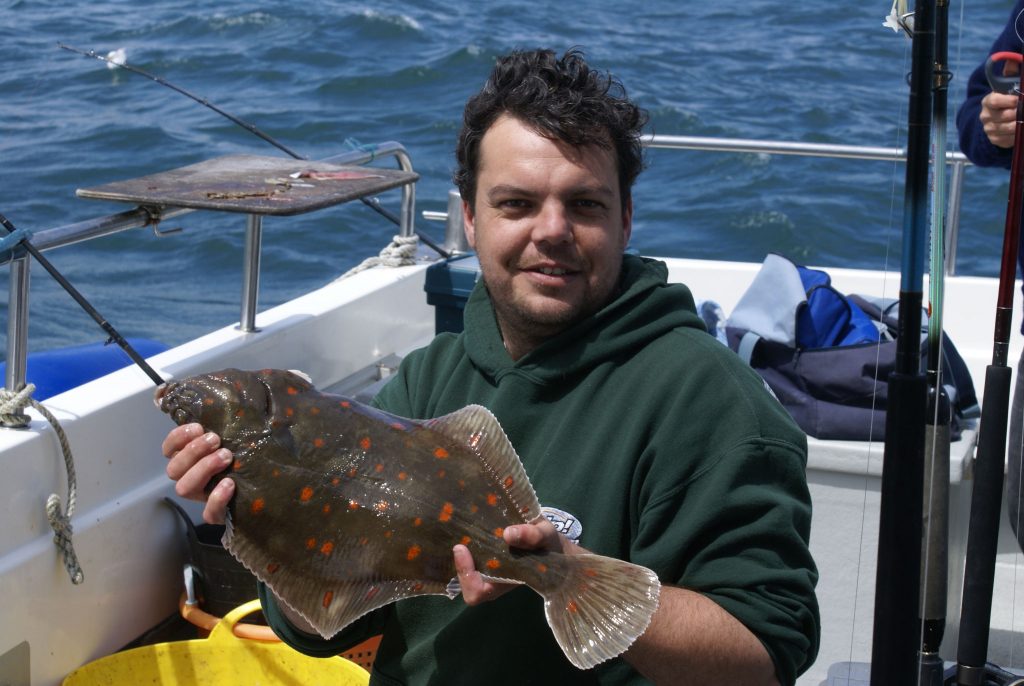
Suitable Rods and reels.
Most venues don’t require more than 4 or 5 ounces of weight when drifting for Plaice, and one of the most important things to remember is that Plaice bites can be quite gentle at times. If the rod is too stiff then bites will be missed and your catch rate will reflect this. The ideal Rod is one of the many longer, competition, continental rods that are now available, but if you don’t want the expense of one of these, then a medium to heavy 9-10ft spinning rod, or even a squid fishing rod will suffice.
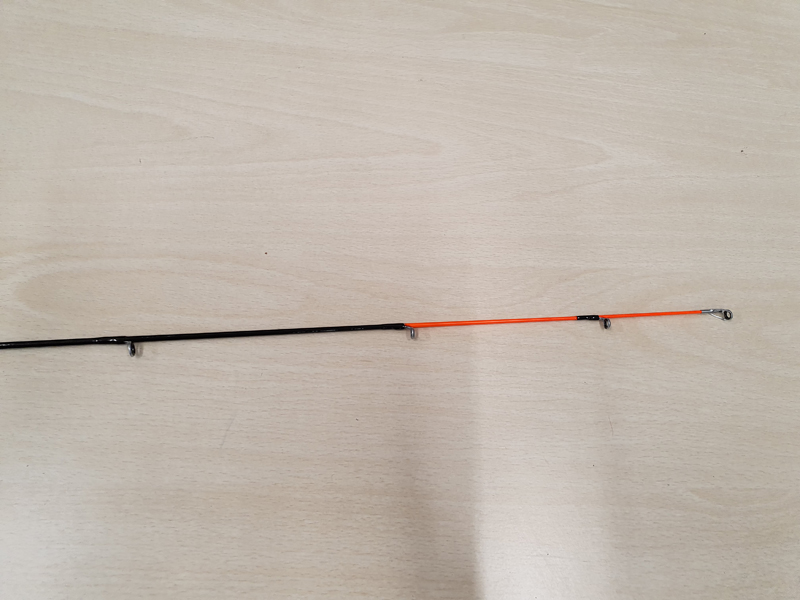
When it comes to reels I’m torn between what is best…. a multiplier with a decent drag and ratchet, or a fixed spool reel with the free spool/bait runner, but in my view, either would need to be loaded with a good low diameter braid.
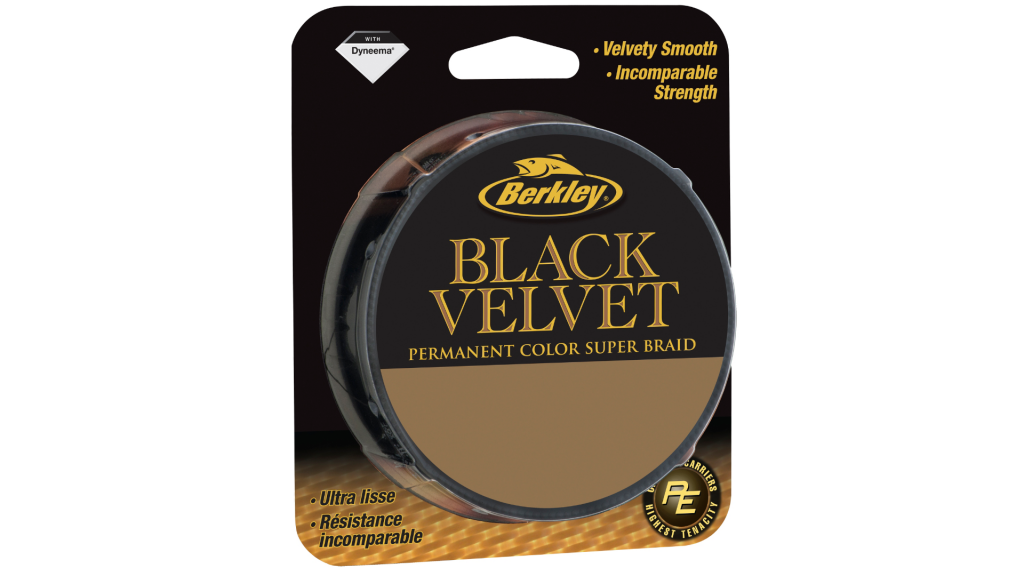
black velvet is a low diameter braid that is super smooth 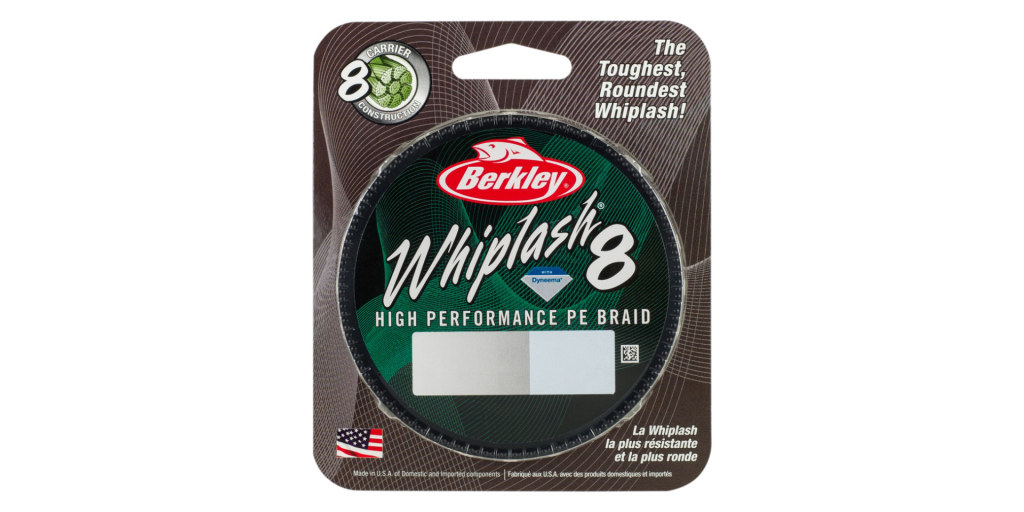
Whiplash crystal is a really low diameter braid 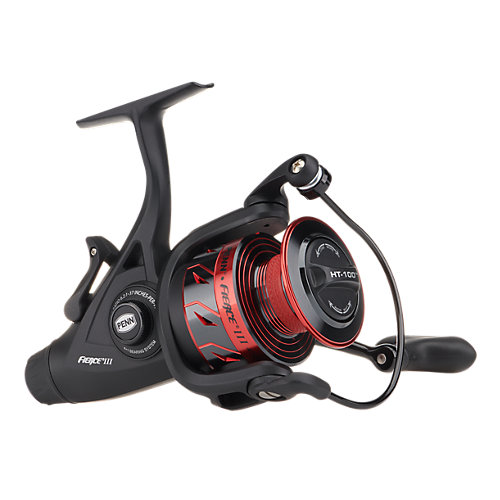
the penn fierce is a great lightweight baitrunner reel for inshore plaice 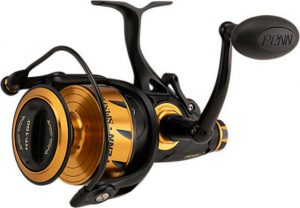
when you need a bit more power for the places where you might need up to 10oz of lead, the penn liveliner will do you well. 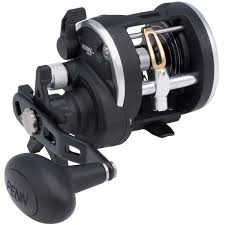
even the mid priced multiplier reels are more than adequate when targeting plaice. 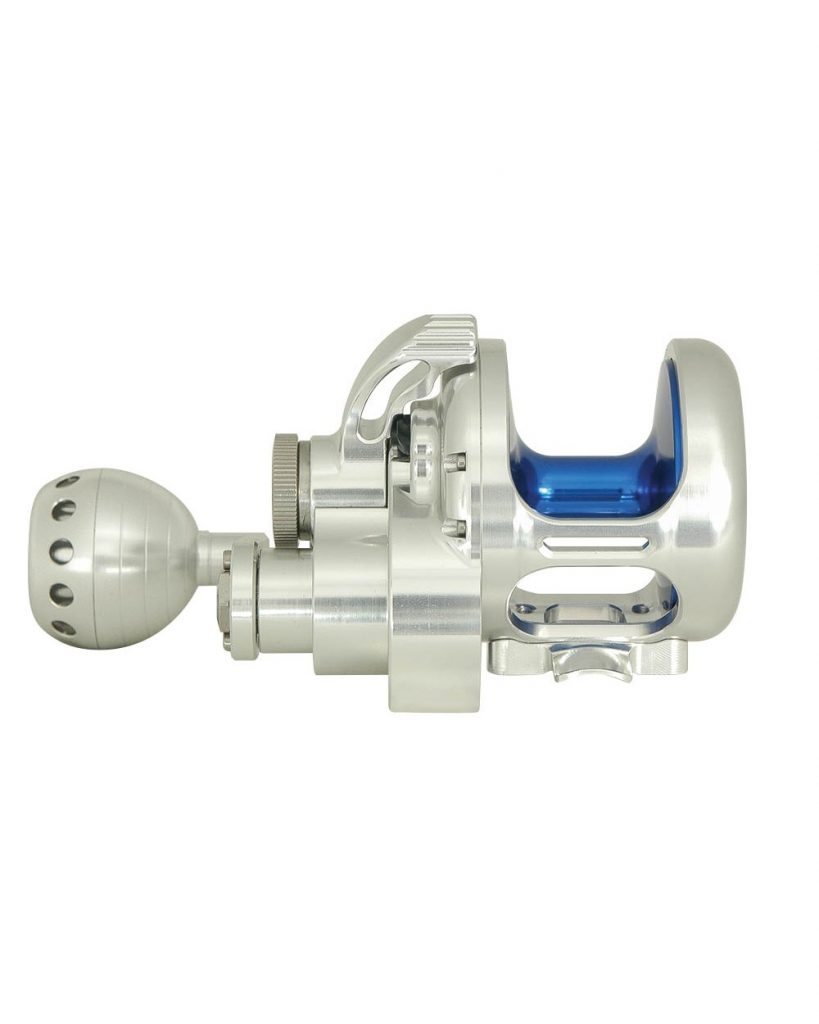
Reels in the higher price range brackets can give you a much smoother drag system, and more cranking power if needed.
Terminal Tackle.
This is where it gets interesting. Every angler you speak to will have their own favourite method when it comes to catching Plaice. Each angler will also have their favourite attractors, and bead colour combinations. There is no hard and fast rule, I regularly fish with a guy who refuses to add any beads or attractors to his Plaice rigs, but a rig without attractors looks boring and aren’t nearly as fun to tie! So here are MY top 3 Plaice rigs.
There are a few things to remember when tying Plaice rigs: Make sure that hook snoods are tied using a good fluorocarbon line to reduce tangles and help keep the snoods invisible to the fish. The snood line must be a lighter breaking strain from the rig body, leader and mainline, so that if you do find a snag while drifting you only lose the snood and not the whole rig. I use long shank hooks to help with bait presentation, the Kamasan B940 black Aberdeen hooks size 1 up to 2/0 are my go to hook, when Plaice fishing. I can generally bend these hooks out if they do get snagged on a rock and I can also use a pair of pliers to “offset” the hook point, which I find gives me a better catch rate and less hooks being swallowed by greedy Plaice.
1: Spreader boom using the Hook-Ups body.
This rig allows me to fish 2 or 3 hooks and allows me to change hook snoods quickly, Ideal when you want to change the bead colour or replace bent hooks and snapped snoods.
When using the standard spreader boom you can fish 2 snoods (ensure the snoods are not long enough to reach each other and tangle). By using a Hook-Up Body instead of a standard weight, you then have the option of using a 3rd snood clipped to the Hook-Up. I tend to shorten my snoods on the spreader boom and then fish a much longer snood from the Hook-Up.
2: Hook-Ups weighted, beaded, 3 down rig.
This rig was designed to be used in conjunction with the Hook-Ups Bodies when the angler wants maximum attractors, and to pin baits down hard to the seabed. This is my go-to Plaice rig when fishing at the faster drift speeds.
The rig body is tied using 100lb 10X Mono line to ensure it doesn’t become too weak while dragging the seabed. As you can see from the photo, it has plenty of beads and can be made in any colour combination you like. There are 3 swivels on this rig body, for you to attach your snoods to (again I add beads and attractors to my snoods), and there are 3 x 14grm barrel weights built into the rig body to ensure it stays tight to the bottom. This is a great Plaice rig when drifting over clean ground at speed. Ensure your snoods are of a lighter breaking strain than the mainline, so if the rig does get snagged you don’t lose everything!
By using the Hook-Ups body as your weight (the rig pictured shows the rig being used with a Hook-Ups Slim body) it keeps everything in-line, reduces tangles, and makes the rig easy to change for different colours, and change the weight you are fishing with.
3. The simple running ledger:
When fishing over more “snaggy” areas, such as Mussel beds and along the edges of reefs / broken ground, tackle losses can and will be much higher. This is where the simple running ledger comes in, using just 1 or 2 hooks.
When using this rig I still like to add beads and/or attractors just above the hooks, and I find using a Watch lead is a must! This type of weight when dragged along the sea bed kicks up a plume of sand and the disturbance it makes is a great Plaice attractor in itself. You can take this a step further by using a coloured watch lead. About 6 years ago we were asked if we could produce a watch lead coloured Glow Green and Red by a very successful Plaice angler in Lyme Regis. I have no idea why this colour combination works so well but it does. So well in fact, that this is why our original Hook-Ups were all made using these 2 colours.
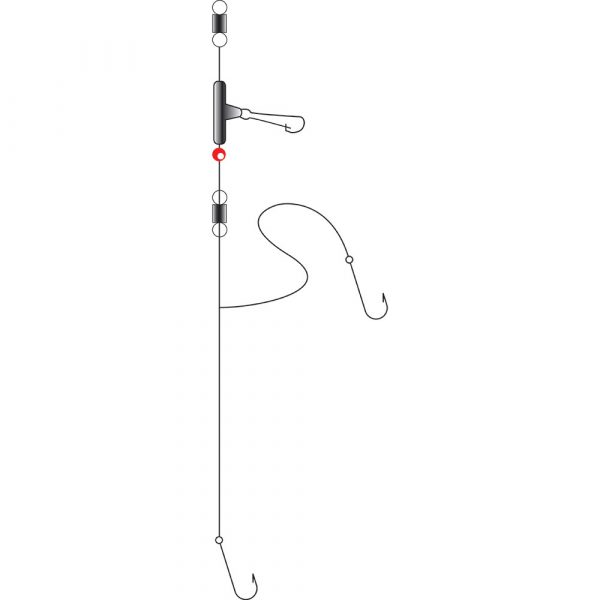
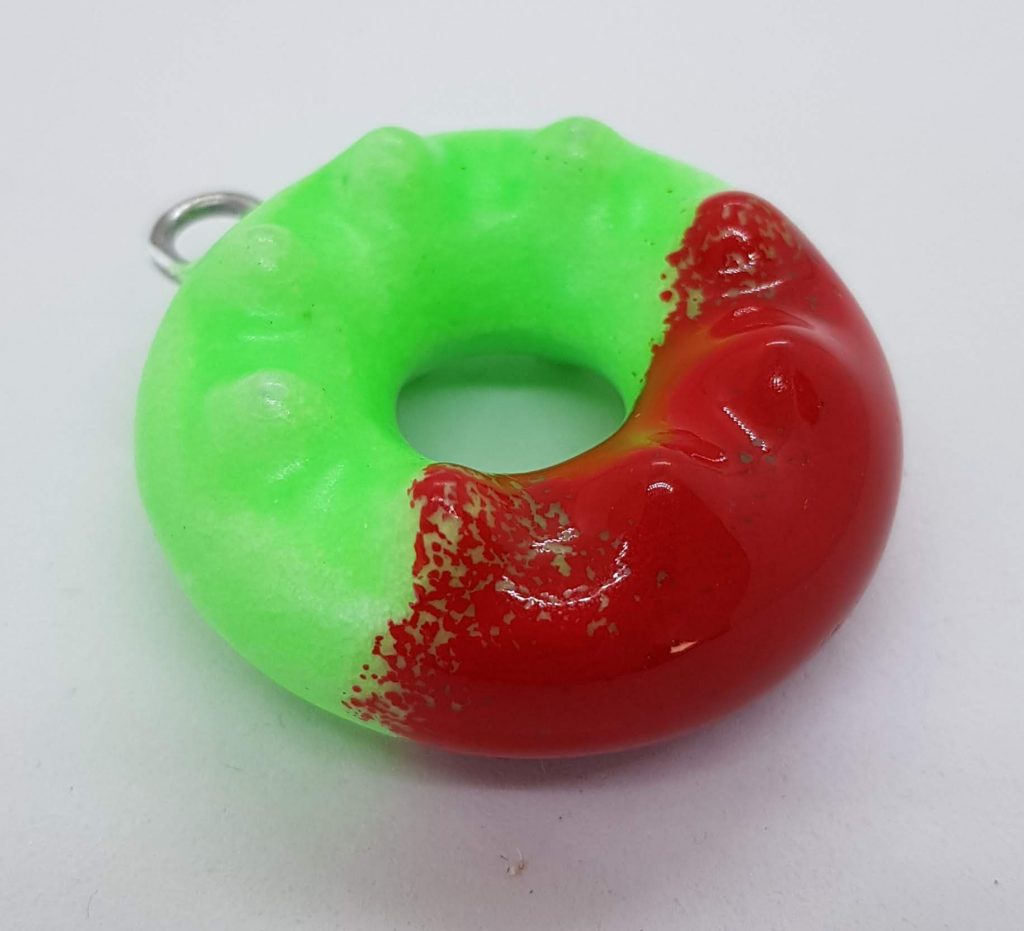
Our powder coated watch leads come in various colours . Check them out in the shop section.
Baits for Plaice:
Plaice will feed on a variety of baits but the main baits that I use are Ragworm, Blow Lug, and Black Lug. I fish all 3 worm baits by tipping them off with a strip of Cuttlefish or Squid. (This is where having a sensitive tip on the rod really pays off. If the rod tip is too stiff and you miss the first initial bite from a Plaice, chances are the fish has ripped the strip of Squid or Cuttlefish from the hook, and is now busy eating that while your rig is drifting away in the tide!). My other favourite bait for Plaice is Peeler Crab. Remove the shell and Legs from the Crab and cut the now soft body into 2 or 3 sections (depending on the size of the crab). Once the crab is mounted onto the hook, squash it into a “sausage” shape and use plenty of fine bait elastic to secure it in place (the stonfo competition elastic is perfect for this). Crab baits can often pick out the larger Plaice.
Other baits that can work well for plaice are: Razor Clams, Scallop frills, Mussels, and Yellow tail Lug.
An important thing to remember when baiting up for Plaice is that although they don’t have a huge mouth, they are amazingly greedy! Don’t “skimp” on bait! 3 or 4 medium Ragworm fed onto the hook and up the snood, tipped off with a strip of Squid produces much more scent, and gives a better visual target for the Plaice, than a single small worm.
Tactics to catch Plaice:
The great thing with Plaice is that you don’t often have to go very far from the shore, which makes them a great target from even small boats and kayaks. Locating them is is fairly easy, simply find an area that is clean ground, head up-tide and start your drift. Keep the weight and rig in contact with the seabed at all times, which may involve using different size weights as the tide increases and decreases throughout the day. Try and get away with as light a weight as possible, as this will help with bite detection. If fishing on a boat with several other people, the anglers on the up-tide side of the boat should be using heavier weights than those on the down-tide side so as to reduce tangling with each other. During Slack water when the drift speed has slowed right down the catch rate often drops off, sometimes to nothing! Movement in the rig and bait is really important when Plaice fishing, once the drift speed slows to much it is worth using the tip of the rod to twitch and bounce the rig, this extra movement can make a huge difference.
When a plaice attacks your bait you will feel sharp rattles. It is important to release line from the reel. If using a multiplier reel I would have the reel in freespool, stopping the line with my thumb, as soon as i feel a bite i take my thumb off the spool and let out a few meters of line. You can do the same with a fixed spool reel and if it has the baitrunner / freespool option, you can just flick the switch to release the line. If you don’t let the line out allowing your baits to sit stationary on the seabed after a Plaice attacks it, One of Three things can happen, firstly the Plaice manages to rip some bait from the hook and then lays there munching on it while the rest of your rig trundles off in the distance. Secondly, the Plaice just gives up trying to chase the bait and the fish is lost to you. Or Thirdly, you get lucky and hook the Plaice straight away, but because he hasn’t had time to really take the bait, he is only lightly lip hooked and manages to throw the hook before you get the net under him.
Now your baits are gently bouncing along the seabed and you are sat back enjoying the tranquility and view of the coast, it is very tempting to put the rod down and relax, or put the rod down and bait up some more hook snoods that can be clipped on to speed up bait changes. If you do put the rod down make sure you loosen the drag so that even the smallest increase in pressure on the reel will release the line, giving you time to put the reel into freespool.
The only other piece of advice I can give you is to make sure you have a disgorger or a pair of forceps with you. As I said earlier, Plaice are greedy and you will get a few that swallow the hook.

